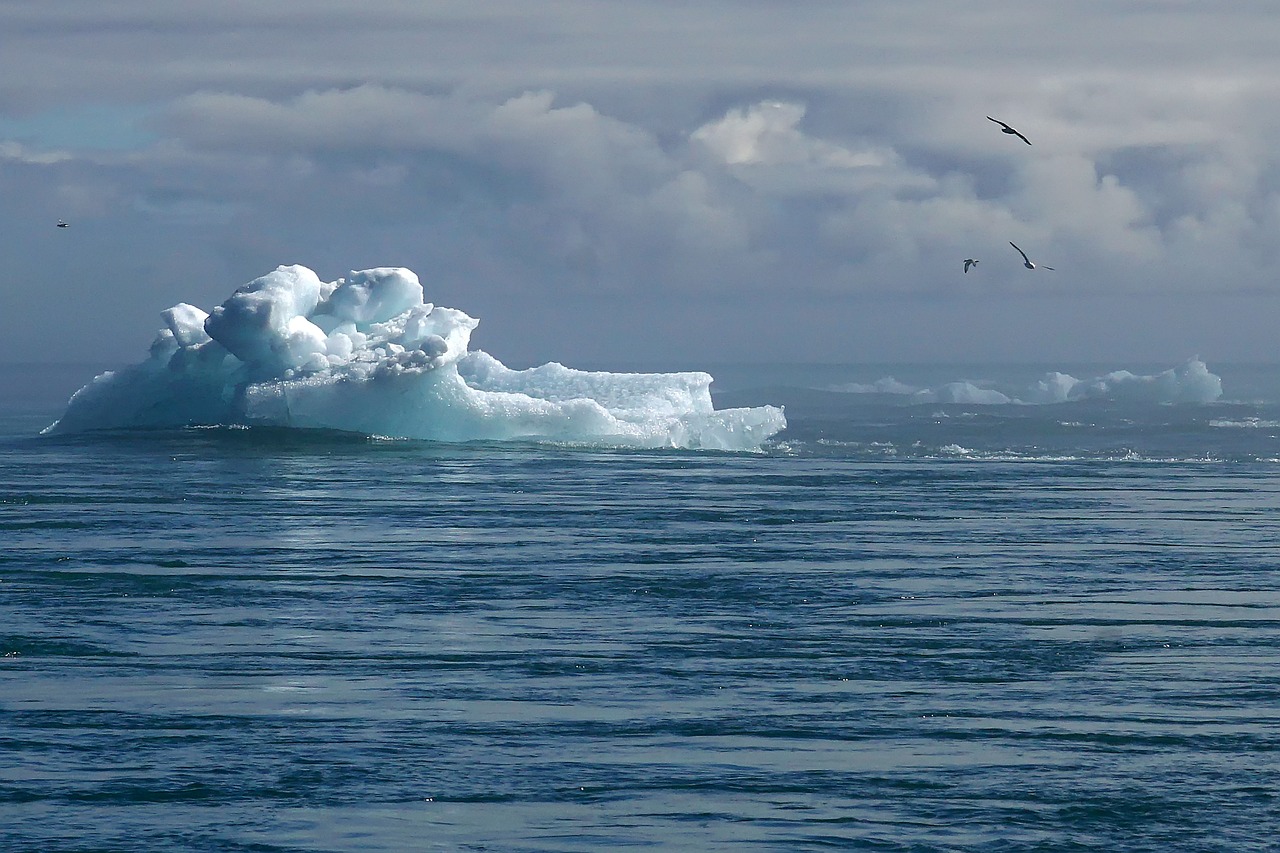Climate change poses a significant threat to monarch butterfly survival by disrupting their migratory patterns, altering habitat conditions, and reducing the availability of milkweed, which is essential for their lifecycle. Increased temperatures and extreme weather events further exacerbate these challenges, leading to declining populations.
The monarch butterfly, known for its remarkable migration journey, is one of the most recognized and studied species in North America. Each year, millions of these butterflies travel thousands of miles from their breeding grounds in Canada and the United States to their wintering sites in Mexico. This incredible journey is not only a spectacle of nature but also a vital part of the ecosystem. However, the survival of monarchs is increasingly threatened by climate change, which impacts their habitats and food sources.
The effects of climate change on monarch butterflies are multifaceted. Rising temperatures can alter the timing of flowering plants, leading to mismatches between the availability of food sources and the life cycle stages of the butterflies. Additionally, extreme weather events, such as storms and droughts, can destroy habitats and affect migration routes. To better understand these changes, it is essential to look at key factors that influence monarch survival.
Key Factors Affecting Monarch Butterfly Survival

Several critical factors impact the survival of monarch butterflies in the context of climate change. These include habitat loss, changing weather patterns, and the decrease in milkweed availability. Each factor plays a distinct role in shaping the future of this iconic species.
| Factor | Impact on Monarchs |
|---|---|
| Habitat Loss | Destruction of breeding and wintering habitats reduces population size. |
| Changing Weather Patterns | Alters migration timing and increases mortality rates. |
| Milkweed Availability | Declines in milkweed threaten larval development. |
Habitat loss is a pressing issue for monarchs. Urban development, agricultural expansion, and deforestation have led to significant reductions in natural habitats. These changes not only remove nesting sites but also disrupt essential ecosystems that support monarch populations.
In addition to habitat loss, changing weather patterns are increasingly affecting migration cycles. Fluctuating temperatures can cause butterflies to arrive at their wintering grounds too early or too late. Such mismatches can lead to increased mortality rates due to exposure to adverse weather conditions.
Perhaps one of the most critical elements for monarch survival is the availability of milkweed. As the sole host plant for monarch caterpillars, a decline in milkweed populations directly impacts larval survival. Climate change can influence milkweed growth patterns and distribution, further complicating conservation efforts.
Understanding these factors is crucial for developing effective strategies to protect monarch butterflies in a changing climate. Conservation efforts must focus on preserving habitats, restoring milkweed populations, and actively monitoring climate impacts on migratory patterns.
Migration Patterns and Climate Change
The migration of monarch butterflies is a fascinating phenomenon that is deeply intertwined with climate conditions. Each year, these butterflies undertake a remarkable journey that spans thousands of miles. However, climate change is causing disruptions that can affect their migratory behavior.
One of the most significant impacts of climate change on monarch migration is the alteration of seasonal weather patterns. Temperature changes can lead to early springs or late winters, affecting the timing of migration. This can result in several challenges:
- Mismatched Timing: If butterflies migrate too early, they may arrive at their wintering sites before suitable conditions are established.
- Increased Mortality: Late frosts or unseasonably cold weather can lead to higher mortality rates among butterflies that arrive prematurely.
- Food Source Availability: Early migration may result in a lack of available nectar sources, essential for energy replenishment during the journey.
Habitat Availability Along Migration Routes
As monarchs migrate, they rely on a network of habitats along their routes to rest and feed. Climate change can significantly impact these critical stopover sites. Changes in precipitation patterns and temperature can alter the vegetation and flower availability in these areas.
Key concerns regarding habitat availability include:
- Destruction of Key Habitats: Urban development and agricultural practices can lead to habitat fragmentation, making it harder for monarchs to find suitable resting places.
- Loss of Nectar Sources: Climate-induced shifts can lead to a decrease in flowering plants, reducing food availability during migration.
- Altered Plant Phenology: Changes in plant blooming times due to temperature shifts can create mismatches with the timing of monarch migrations.
The Role of Milkweed in Monarch Lifecycle
Milkweed is not only critical for the larval stage of the monarch butterfly but also plays a significant role in their overall survival. Understanding how climate change affects milkweed populations is essential for conservation efforts.
Some impacts of climate change on milkweed include:
- Temperature Sensitivity: Milkweed species have specific temperature ranges for optimal growth. Higher temperatures may stress these plants and inhibit their ability to flourish.
- Increased Competition: Climate change can introduce new plant species or exacerbate existing ones, leading to increased competition for resources.
- Pesticide Use: As agriculture expands to adapt to changing climates, pesticide usage may increase, further harming milkweed populations.
Conservation Strategies for Milkweed
To mitigate the effects of climate change on milkweed and, consequently, monarch populations, several conservation strategies can be implemented:
- Restoration Projects: Initiatives aimed at restoring natural habitats can help increase milkweed availability.
- Pesticide Reduction: Promoting organic farming practices can minimize pesticide use and support healthy milkweed growth.
- Public Awareness Campaigns: Educating communities about the importance of milkweed can encourage planting and preserving these vital plants.
Research and Monitoring Efforts
Ongoing research and monitoring are crucial for understanding the impacts of climate change on monarchs. Various organizations and researchers are working collaboratively to gather data, track population trends, and assess habitat conditions.
Key initiatives include:
- Citizen Science Programs: Engaging the public in reporting monarch sightings can enhance data collection efforts.
- Long-term Studies: Establishing long-term monitoring sites helps scientists understand how climate change affects migration patterns and population dynamics.
- Collaboration with Farmers: Partnering with agricultural communities can promote sustainable practices that benefit both crops and butterfly populations.
The proactive engagement of scientists, conservationists, and the public is essential for sustaining monarch populations amidst the challenges posed by climate change.
Climate Change and Pesticide Use

The relationship between climate change and pesticide use presents a significant challenge for monarch butterfly survival. As temperatures rise and weather patterns shift, agricultural practices are evolving, often resulting in increased pesticide applications. This change threatens not only monarchs but also the entire ecosystem.
Pesticides, particularly neonicotinoids, have been shown to have harmful effects on non-target species, including pollinators like monarch butterflies. The following points highlight the impact of pesticide use on monarch populations:
- Direct Toxicity: Pesticides can be lethal to monarch larvae and adults, reducing their numbers significantly.
- Sub-lethal Effects: Exposure to sub-lethal doses may impair navigation, reproduction, and foraging behaviors, impacting overall population health.
- Reduction of Milkweed: Pesticides can also harm milkweed plants directly, leading to fewer resources for monarch caterpillars.
Mitigating Pesticide Impact on Monarchs
Addressing the issue of pesticide use is vital for conserving monarch butterflies. Several strategies can help mitigate its impact:
- Integrated Pest Management (IPM): Promoting IPM practices can reduce the reliance on chemical pesticides by encouraging natural pest control methods.
- Organic Farming Practices: Supporting organic farming can minimize pesticide usage and promote healthier ecosystems.
- Policy Advocacy: Advocating for policies that limit harmful pesticide use and promote sustainable agriculture can lead to significant changes.
The Role of Climate-Resilient Habitats

Creating climate-resilient habitats is essential for supporting monarch butterfly populations in an era of climate change. These habitats can provide safe breeding grounds and feeding areas that withstand environmental stressors.
Key characteristics of climate-resilient habitats include:
- Diversity of Plant Species: A variety of native plants can ensure food availability and habitat stability.
- Water Accessibility: Ensuring that habitats have sufficient water sources helps support plant growth and butterfly survival.
- Connected Landscapes: Designing landscapes that facilitate movement between habitats can help butterflies adapt to changing conditions.
Creating Monarch-Friendly Gardens
Individuals and communities can contribute to monarch conservation by creating butterfly-friendly gardens. These gardens can serve as crucial stopover points during migration and provide essential resources for breeding. Some tips for establishing such gardens include:
- Select Native Plants: Choose native flowers and milkweed species that attract monarchs and other pollinators.
- Avoid Pesticides: Limit or eliminate pesticide usage in gardens to create a safe environment for butterflies.
- Provide Shelter: Incorporate features such as shrubs or small trees to offer shelter from predators and harsh weather.
Community Engagement and Education
Community engagement is a powerful tool in the fight against climate change impacts on monarch butterflies. Educating the public about the challenges faced by these butterflies can foster greater awareness and encourage participation in conservation efforts.
Effective strategies for community engagement include:
- Workshops and Seminars: Hosting educational events can inform people about the importance of monarchs and how they can help.
- School Programs: Integrating butterfly conservation topics into school curricula can inspire younger generations to become advocates for the environment.
- Community Science Projects: Encouraging local residents to participate in data collection helps build a sense of stewardship and responsibility.
The collaboration between communities, conservation organizations, and scientists is essential for developing effective strategies that can help safeguard monarch butterflies against the threats posed by climate change. Engaging with stakeholders at every level will create a more integrated approach to conservation, ensuring a better future for these iconic butterflies.
Future Research Directions

As climate change continues to pose challenges for monarch butterflies, future research will be vital in understanding and mitigating these impacts. Several areas of study are particularly important:
- Climate Modeling: Developing models that predict how climate change will affect butterfly migration patterns, breeding success, and population dynamics can inform conservation strategies.
- Habitat Restoration: Researching effective methods for restoring and creating habitats that support milkweed and nectar plants is crucial for supporting monarchs.
- Genetic Studies: Investigating the genetic diversity of monarch populations can help assess their resilience to changing environmental conditions.
Collaboration among scientists, conservationists, and policymakers will enhance the effectiveness of these research efforts. By pooling resources and knowledge, stakeholders can develop innovative solutions to protect monarch butterflies from the effects of climate change.
Importance of International Cooperation
The migratory journey of monarch butterflies spans multiple countries, underscoring the need for international cooperation in conservation efforts. Countries along the migration route must work together to address shared challenges:
- Policy Alignment: Coordinating policies that promote habitat conservation and reduce pesticide use across borders can create a more cohesive approach to protecting monarchs.
- Shared Research Initiatives: Collaborative research projects can lead to a better understanding of migration patterns and population dynamics on a continental scale.
- Education and Awareness Campaigns: Joint efforts in raising awareness about the plight of monarchs can mobilize communities across regions to participate in conservation.
International cooperation is essential for addressing the complexities of climate change and its impact on migratory species like the monarch butterfly. By fostering partnerships, countries can enhance their conservation efforts and ensure the survival of this iconic species.
Final Thoughts
The impact of climate change on monarch butterfly survival is significant and multifaceted. From altered migration patterns to habitat loss and pesticide threats, these challenges require immediate attention and action. However, there is hope through community engagement, research, and international collaboration. By raising awareness, implementing conservation strategies, and creating climate-resilient habitats, we can work towards a sustainable future for monarch butterflies.
Conservation efforts must be comprehensive and adaptive, considering the dynamic nature of climate change. Every individual can contribute by creating butterfly-friendly spaces, participating in citizen science, and advocating for policies that protect our environment. The survival of monarch butterflies depends on our collective efforts to understand and mitigate the effects of climate change. Together, we can ensure that future generations will witness the beauty of monarchs in their natural habitats.
In conclusion, as we face the challenges posed by climate change, it is critical to remain vigilant and proactive in our conservation efforts. The fate of the monarch butterfly serves as a poignant reminder of the interconnectedness of nature and humanity’s role in preserving it.
